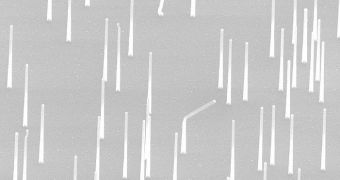Scientists at the Georgia Institute of Technology (Georgia Tech), in the United States, believe they may have produced the first-ever sensing device at the nanoscale that is capable of being completely autonomous in terms of energy requirements. The instrument can power itself, and is made out of two piezoelectric nanoscale generators, alongside two types of nanowire sensors. Piezoelectric devices are materials, usually crystals and ceramics, that respond to mechanical stress by producing an electric potential, ScienceDaily reports.
“We have demonstrated a robust way to harvest energy and use it for powering nanometer-scale sensors. We now have a technology road map for scaling these nanogenerators up to make truly practical applications,” says Georgia Tech School of Materials Science and Engineering Regents professor Zhong Lin Wang. He explains that some of the applications in which the new instrument may excel include measuring the pH of liquids, or even detecting ultraviolet light. It all depends on how much energy it can harvest from its surroundings, the group believes.
Each of the nanogenerators contains in excess of 20,000 zinc oxide nanowires, which allows the full device to produce as much as a 1.2-volt output. The entire process was made to facilitate production at low costs, on flexible substrates. “We can now grow the wires chemically on substrates that are foldable and flexible and the processing can now be done at substrate temperatures of less than 100 degrees Celsius – about the temperature of coffee. That will allow lower cost fabrication and growth on just about any substrate,” the expert adds.
“Building devices that are small isn't sufficient. We must also be able to power them in a sustainable way that allows them to be mobile. Using our new nanogenerator, we can put these devices into the environment where they can work independently and sustainably without requiring a battery,” Wang says. Details of the new investigation appear in the March 29 issue of the esteemed scientific publication Nature Nanotechnology. The work was funded via grant money from the US National Science Foundation (NSF), the Defense Advanced Research Projects Agency (DARPA), and the Department of Energy (DOE).

 14 DAY TRIAL //
14 DAY TRIAL //